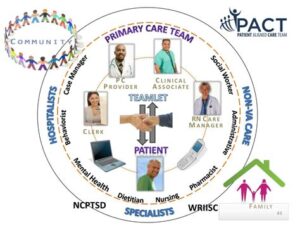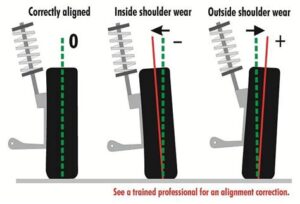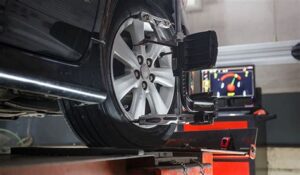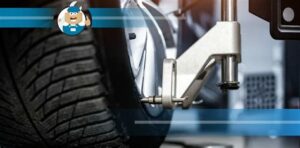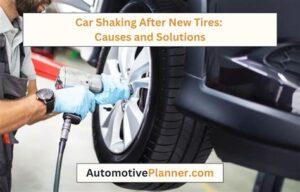Is your vehicle pulling to the right even after a recent wheel alignment? This frustrating issue can compromise your driving experience and safety. Understanding the common causes of this phenomenon is crucial for every car owner. Proper wheel alignment is essential not only for optimal vehicle performance but also for prolonging the lifespan of your tires. Factors like tire pressure can significantly influence your car’s handling, leading to unwanted pulling. In this article, we will delve into the symptoms of misalignment, explore how to identify and rectify these issues, and provide practical steps to ensure that your car maintains a straight path on the road. Keep reading to discover valuable insights and solutions for your alignment troubles!
Common Causes Of Car Pulls To Right After Alignment
Experiencing a situation where your car pulls to the right after alignment can be frustrating and may compromise your driving safety. Various factors could contribute to this issue, and understanding them is crucial for effective resolution. Below are some common causes:
| Cause | Description |
|---|---|
| Uneven Tire Tread | Different wear patterns on your tires can lead to uneven contact with the road, causing the vehicle to pull in one direction. |
| Faulty Suspension Components | Worn-out or damaged suspension parts, such as shocks or struts, can affect how weight is distributed and lead to pulling. |
| Incorrect Camber Angles | Improper camber settings can cause one tire to make more contact with the road than the other, resulting in a pull to the side. |
| Differential Issues | If your vehicle has a problem with its differential, it may affect how power is distributed to the wheels, leading to pulling. |
| Brake Drag | If one of the brakes is applying more force than the others, it can cause the car to steer to the right unintentionally. |
Identifying these causes can help not only in understanding why your car pulls but also in taking appropriate measures to rectify the situation. Always consult a professional mechanic for a thorough inspection and accurate diagnosis to ensure safe driving conditions.
Understanding The Importance Of Proper Wheel Alignment
Proper wheel alignment is crucial for ensuring your vehicle operates smoothly and efficiently. When your car pulls to the right after alignment, it may indicate that the alignment has not been performed accurately, which can lead to a variety of issues. Here are some key reasons why maintaining proper wheel alignment is vital:
| Benefit | Description |
|---|---|
| Improved Tire Life | Proper alignment prevents uneven tire wear, extending the lifespan of your tires and saving you money in the long run. |
| Enhanced Fuel Efficiency | When your wheels are aligned correctly, your vehicle experiences less rolling resistance, which can lead to better fuel economy. |
| Superior Handling | Proper alignment ensures that your vehicle handles predictably and confidently, improving safety and driving comfort. |
| Reduced Strain on Suspension | Misalignment can lead to additional stress on suspension components, which may result in costly repairs down the road. |
In conclusion, recognizing the significance of proper wheel alignment not only helps prevent your car from pulling to the right but also contributes to overall vehicle performance, safety, and longevity. Regular checks and adjustments can keep your vehicle functioning optimally, ensuring a safer driving experience.
How Tire Pressure Affects Car Pulls To The Right
Tire pressure plays a crucial role in ensuring optimal vehicle performance. When the tire pressure is uneven or outside the manufacturer’s recommended levels, it can lead to various handling issues, including the tendency for your car to car pulls to one side, such as the right. Here’s how improper tire pressure can contribute to this problem:
Regularly inspecting your tire pressure and maintaining it within the recommended range not only enhances safety but also ensures that your vehicle handles smoothly, reducing the likelihood of issues such as car pulls to the right after an alignment.
Identifying Symptoms Of Misalignment And Uneven Wear
Recognizing the symptoms of misalignment and uneven tire wear is crucial for ensuring a smooth and safe driving experience. If your car pulls to one side after an alignment, it can indicate underlying issues that need attention. Here are some common signs to look out for:
- Steering Wheel Off-Center: If your steering wheel is not centered while driving straight, this may suggest that your wheels are misaligned.
- Uneven Tire Wear: Inspect your tires regularly for signs of uneven wear patterns. For instance, if one side of the tire is more worn than the other, it’s a strong indication of misalignment.
- Car Pulling to One Side: As previously noted, if your vehicle pulls to the right, it can be a direct result of improper wheel alignment.
- Vibration: Noticeable vibrations through the steering wheel at certain speeds can also signify alignment issues. This may accompany pulling to one side.
- Increased Steering Effort: If you find yourself working harder to keep your car going straight, it may be due to misalignment.
Addressing these symptoms promptly can help prevent further complications and costly repairs. If you notice any of these signs, it is advisable to consult a professional technician who can evaluate and correct your vehicle’s alignment.
Steps To Fix Car Pulls To Right After Alignment Issues
When your car pulls to the right after an alignment, it can be frustrating and potentially dangerous. Fortunately, there are steps you can take to diagnose and resolve the issue. Here’s a breakdown of what you can do:
- Recheck Wheel Alignment: The first step is to ensure that the wheel alignment was performed correctly. Sometimes, minor adjustments are necessary. Return to the shop that performed the alignment and ask them to check it again.
- Inspect Tire Pressure: Uneven tire pressure can lead to pulling. Use a tire pressure gauge to check each tire and ensure they are inflated to the manufacturer’s recommended specifications.
- Check Tire Condition and Tread: Inspect all tires for uneven wear patterns or damage. If one tire is more worn than the other, it can contribute to pulling. In some cases, rotating the tires can help.
- Examine Suspension Components: Worn or damaged suspension parts, such as control arms or bushings, can affect alignment and cause pulling. Have a qualified technician inspect the suspension system thoroughly.
- Review Vehicle Load: Ensure that your car isn’t carrying excessive weight on one side, which can cause it to pull. Adjust the load if necessary.
- Check Steering Wheel Position: After an alignment, the steering wheel should be centered. If it’s off-center while driving straight, it may indicate an incorrect alignment that needs to be addressed.
- Consult a Professional: If after trying the above steps your car still pulls to the right, it may be best to consult a professional mechanic who can provide a more in-depth diagnosis.
Addressing the issue of a car that pulls can enhance your vehicle’s performance and safety. Proper maintenance and regular checks can prevent alignment issues and ensure a smooth driving experience.
Frequently Asked Questions
What causes a car to pull to the right after an alignment?
Several factors can cause a car to pull to the right after an alignment, including uneven tire pressure, worn suspension components, or improperly adjusted camber or toe angles.
Is it normal for a car to pull to the right immediately after alignment?
No, it is not normal. A properly performed alignment should ensure that the vehicle tracks straight. If it pulls to one side, further inspection is needed.
What should I check if my car pulls to the right after an alignment?
You should check the tire pressure on all four tires, inspect for any uneven wear on the tires, and examine suspension components for wear or damage.
Could tire issues contribute to pulling to the right?
Yes, uneven tire wear or differences in tire pressure can significantly impact how the car handles, causing it to pull to one side.
How can I determine if my alignment was done incorrectly?
Signs of incorrect alignment include the steering wheel being off-center, the car pulling to one side, or uneven tire wear patterns.
What should I do if my car continues to pull to the right after checking everything?
If the issue persists after checking tire pressure and wear, it’s advisable to return to the shop that performed the alignment or consult another mechanic for a thorough inspection.
How often should I have my car’s alignment checked?
It’s generally recommended to have your car’s alignment checked every 6,000 to 10,000 miles, or whenever you notice handling issues or have new tires installed.
